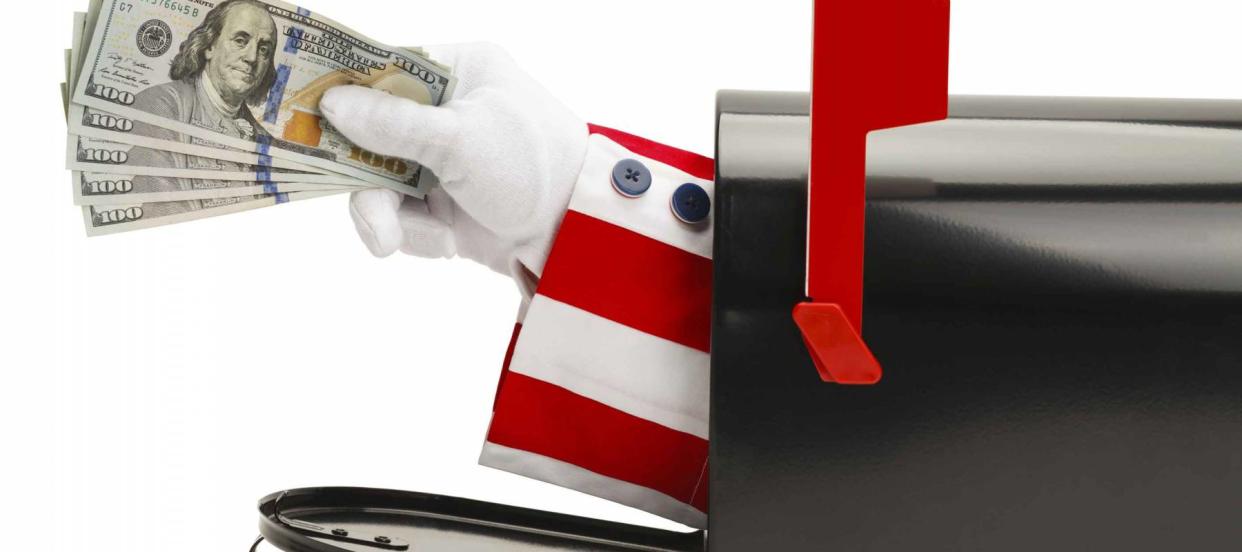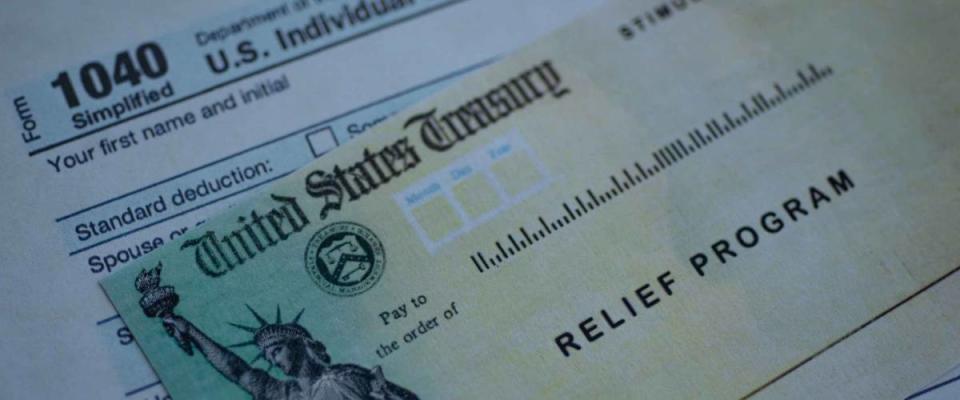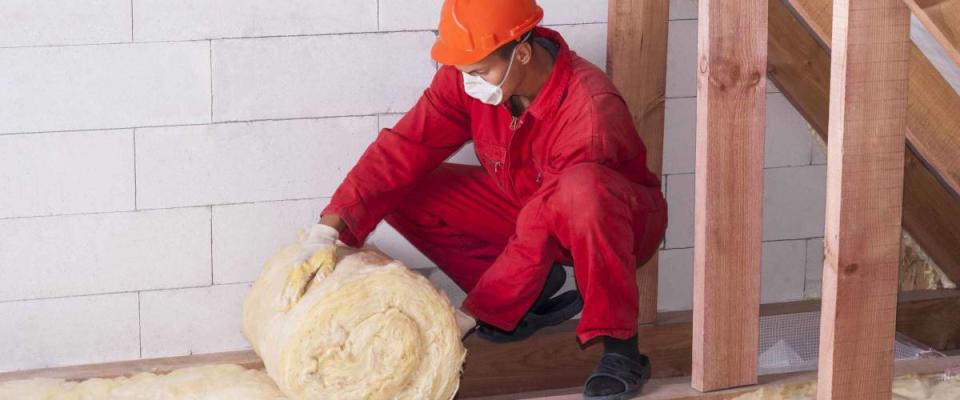Like stimulus checks? See 12 other legit ways to get free government money

"Free government money"? Come on, that's a scam, right?
Well yeah, there are scammers who try to steal your personal information and your money with promises of free pots of gold from the government. But there also are many legitimate ways your Uncle Sam can provide you with some cash with no strings attached.
The stimulus checks to help Americans get through the pandemic are an obvious example. But you might also receive money if you're buying your first home, preparing to go to college, needing some help with your monthly bills — or if you're just absent-minded and left behind a savings account somewhere.
Take a look at these completely legit ways you can get free money from the government.
1. Unclaimed tax refunds and other forgotten funds
Love getting a tax refund? It seems many people aren't that enthusiastic about getting money back from the IRS, because $1 billion or more in tax refunds go unclaimed every year.
Americans have three years to file a tax return and claim refund money. When they don't, it goes back into the tax agency's coffers.
There's no penalty for not filing a tax return if you're due a refund, but it's worth your while to file each year just in case Uncle Sam does owe you something. Good tax software will walk you through the process and track down all the deductions that apply to you.
Meanwhile, more than $40 billion is out there for the taking from forgotten bank accounts, life insurance policies, utility deposits and other sources, according to the National Association of Unclaimed Property Administrators. You can see if you've got any long-lost money by checking MissingMoney.com or Unclaimed.org.
2. Missing stimulus checks

Filing your taxes is especially important this year because it’s an essential step if you want to claim a lost stimulus check.
Two rounds of checks went out last year, totaling $1,200 and $600 for most Americans. If you failed to receive one of these “economic impact payments,” you can apply for a Recovery Rebate Credit on Form 1040 of your federal tax return.
Filing your return also will give you a chance to update your info with the IRS so you won’t miss any additional stimulus checks that come along. A new $1,400 payment is now in the works.
If you can’t wait for the next check to arrive, consider taking a few steps to make your own stimulus check.
3. Unclaimed pension benefits
Remember pensions? They've largely been replaced by 401(k) plans, so today few workers get pensions, which promise guaranteed income in retirement.
That can be a sweet deal, yet many Americans leave their scarce pension benefits on the table. The Pension Benefit Guaranty Corp. says 80,000 people are owed over $300 million in unclaimed pension money.
To see if any of that is yours, you can go on the PBGC's website and use its search engine. You can look under your name or the name of a company where you worked.
And for help managing your retirement money — so you won't lose track of any of it — you might want to turn to one of today's affordable financial planning services that operate online.
4. Down payment assistance

The great American dream of home ownership comes with a great big upfront cost: the down payment. Yes, buyers can get incredibly low mortgage rates today, but scraping together up to 20% of the cost of the house can be a heck of a challenge.
However, it's not hopeless: Federal, state and local government agencies have grant programs to help make the dream come true.
For example, the federal Department of Housing and Urban Development's Good Neighbor Next Door program picks up half the price of a home for teachers, law enforcement officers, firefighters and emergency medical technicians who commit to live in a community for three years.
The department's website can direct you to homebuyer assistance programs available in your state.
5. Help with utilities
The average U.S. household spends over $4,000 a year — around $337 a month — on utilities, including electricity, heating and phone services, according to the latest census data.
You bet that's a lot of money, and paying the bills to keep everything plugged in and turned on can be a struggle for many families.
The Federal Communications Commission's Lifeline program helps low-income Americans stay connected by providing up to $9.25 monthly discount on phone or broadband internet service.
And, the federal Health Department's Low Income Home Energy Assistance Program, or LIHEAP, offers state-issued grants for heating and air conditioning costs in the home. The department has a map to help you find LIHEAP contacts in your state.
6. Weatherization money

After you've gone to the trouble of getting the government to help with your energy costs, don't waste money by letting cold seep in during the winter and heat worm its way into your home during the summer.
The federal Weatherization Assistance Program has money available for weatherstripping, insulation and other home efficiency updates to make your home more energy efficient and cut your heating and cooling bills.
Up to 30 million U.S. families qualify for this benefit, which the U.S. Department of Energy says saves households an average of $283 or more every year.
Eligibility is based on income. For example, a family of four can get weatherizing help if their annual income doesn't exceed $52,400.
7. Education assistance
Education is freaking expensive. The average annual tuition and fees in 2021 are around $41,000 at four-year private institutions, according to US News. In-state students pay an average of $11,000 a year at public colleges.
But federal and state grants can make paying for college less painful.
You could get a federal Pell Grant if you're able to show you have "exceptional financial need." For the 2020-2021 academic year, Pell Grants are available for up to $6,345 and since it's a grant, the money doesn't have to be paid back.
You also can try to land a Federal Supplemental Educational Opportunity Grant through the financial aid office at your school. Amounts range from $100 and $4,000, based on how needy you are.
The first step toward gathering up a sackful of financial aid is to fill out a FAFSA, the Free Application for Federal Student Aid. Be warned: It's notoriously complicated and confusing, but if you and your family can hack your way through all of the mumbo jumbo, it can be worth it.
8. Free tax services

Tax filing can be a nerve-racking process, and reaching out to an accountant for help can cost you a pile of money.
As we mentioned earlier, good software makes doing your taxes easy and is often completely free.
But if you prefer in-person help, you might be able to get that at no cost through the IRS' Volunteer Income Tax Assistance, or VITA program.
Here’s how it works: Retired tax experts volunteer in their communities to help complete tax returns for people who earn $57,000 or less, or who are disabled or not proficient in English.
A related service offers seniors free tax help and more. The IRS says volunteers for its Tax Counseling for the Elderly program bring specific knowledge about pensions and retirement finances unique to older Americans.
9. Social Security
We know exactly what many of you are going to say: “Social Security isn’t free! It's my money — I paid for it with Social Security taxes my entire working life!"
But Americans often do receive "free money" from Social Security: more back in the form of benefits than they ever put in, according to the Urban Institute.
A 2018 study from the think tank found that a single woman who turned 65 in 2020 after working in low-earning jobs will have paid $132,000 in total Social Security taxes, but will collect $209,000 in lifetime benefits. A married one-earner couple whose breadwinner hit 65 last year after making average money will have paid $294,000 into the system but will get back $529,000. (All dollar amounts are in 2017 dollars.)
And don’t worry — you’ll get your money, because Social Security isn’t going broke. That's a common myth.
10. Social Security’s lump-sum death benefit

There are lots of ways to get extra money from Social Security. One of the more obscure ones is a modest one-time death benefit you can receive when you lose a spouse or parent.
What do we mean by "modest"? Today’s typical payment is just $255, an amount that was introduced in 1954.
The lump-sum death benefit has been around since 1935, before the program offered survivors benefits for widows, widowers and other dependents. Once those benefits came along, the death payment evolved into money for burial expenses, but it doesn’t go very far today. In 2019, the average funeral cost $7,640, according to the National Funeral Directors Association.
Proposals have been made over the years to end or increase the benefit, but they’ve all hit — wait for it — dead ends.
11. Compensation when you’ve been scammed
Have you been ripped off? Maybe when you were urged to send money to “collect” your prize from a phony sweepstakes, or if you paid for an item you never got from an online store that seemed a little sketchy. (Really, you should have known better.)
The Federal Trade Commission can help you get some money from the scammers.
First, you need to file a complaint with the agency, explaining what happened and how much you lost. If the FTC gets enough complaints, it takes legal action against the company, recovers money and sends checks to customers. Officials say they try to return as much money as possible to each victim.
Recent FTC checks have gone to people who fell for fraudulent business opportunities, and for shoppers who paid for LED lightbulbs that didn’t work well.
12. Unemployment benefits

When you lose your job through no fault of your own — say, because of a global pandemic — the government's got your back. It provides some cash to help you get by, for a time.
Today's unemployment insurance system is overseen by the federal government but run by the states, and some are stingier than others. Benefits can last up to 26 weeks and range from $235 a week (in Mississippi) to $555 (in Massachusetts).
During the first wave of the coronavirus crisis — which saw unemployment soar higher than at any time since the Great Depression — the federal government threw in an additional $600 per week. Those bonus payments ended last July, but under the most recent stimulus package, out-of-work Americans can get an extra $300 a week until March 14.
On top of that, if President Joe Biden’s proposed $1.9 trillion rescue plan passes, bonus unemployment payments will increase to $400 per week through the end of September.
13. FHA mortgage refunds
FHA home loans — backed by the Federal Housing Administration — are popular with first-time homebuyers because they allow you to make a low down payment, even if you have a so-so credit score.
The FHA guarantees to pay a portion of the loan if you default, but you agree to take on some of the risk by paying mortgage insurance premiums, or MIP, starting with an upfront premium at closing of 1.75% of the loan amount.
The housing agency has determined that some borrowers are owed refunds of part of their upfront MIP if they didn't default on their loans. You can find out if you have some mortgage money waiting by reading the FHA’s refund fact sheet.

 Yahoo News
Yahoo News 
